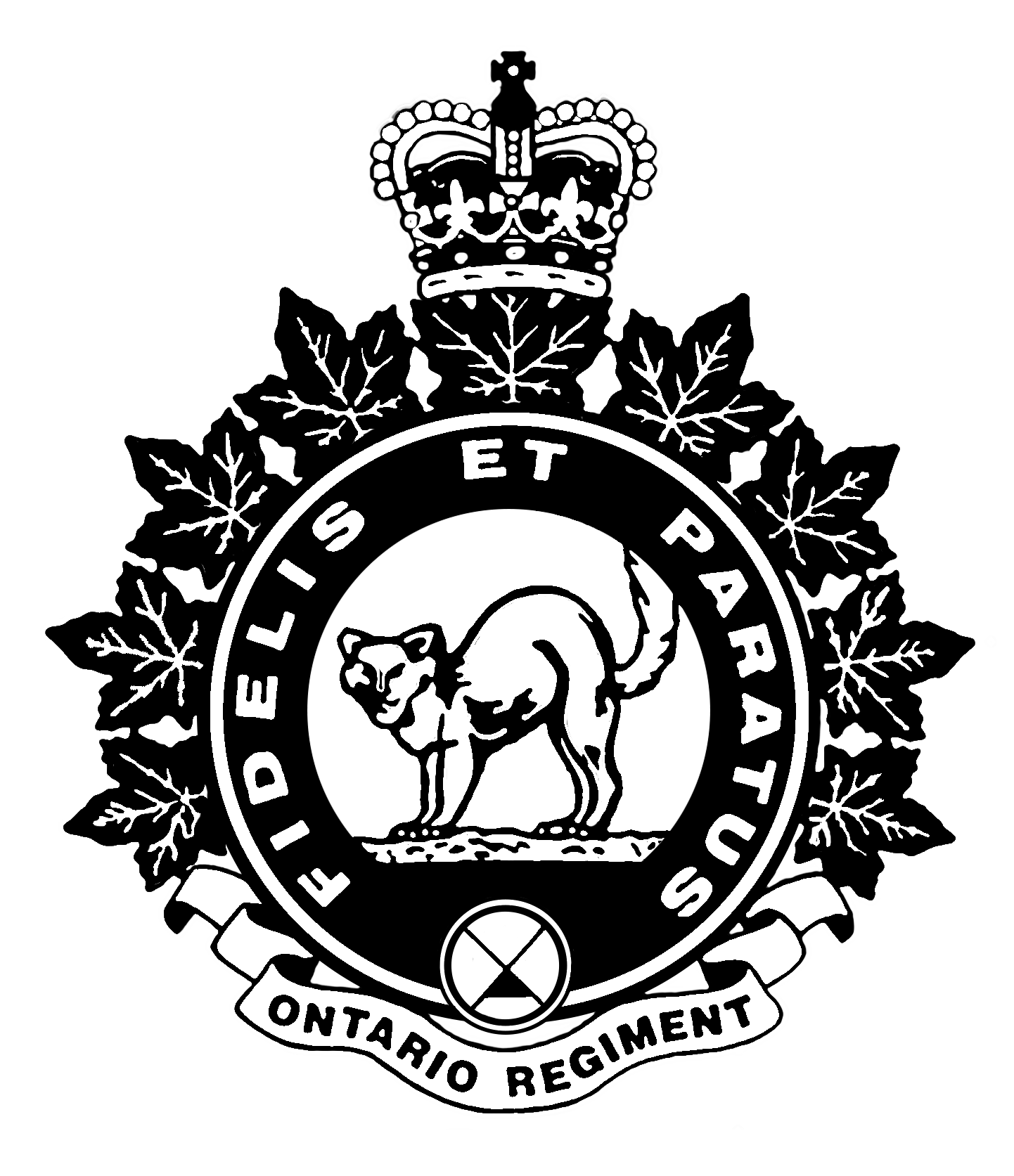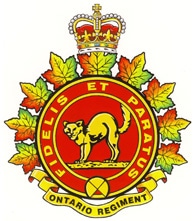May 1940 was a milestone month for the soldiers of the Ontario Regiment with their move to Camp Borden. Since being mobilized in September 1939, the Regiment had been based in Oshawa where the equipment and training opportunities were limited. While some soldiers had attended armour courses at Borden in the preceding months, now the whole Regiment would be at the camp and have continuous access to the Canadian Armoured Fighting Vehicles Training Centre’s vehicles and equipment.

In addition to carrying on with regular training, time was spent in preparing for the upcoming move. The most public of these preparations took place on 12 May. The day began with a 2:00pm drumhead service in Oshawa’s Memorial Park, led by Regimental chaplain Major (Reverend) S.C. Jarrett. The drumhead service was followed by a Trooping of the Colours ceremony. The Colour Party consisted of Lieutenant Herbert Irwin carrying the King’s Colour and Lieutenant Lyle Gerry carrying the Regimental Colour. The Escorts were Company Sergeants-Major Jack Barker, Frank Crawford and Charles Wright. The Regiment continued on to St. George’s Church for a Depositing of the Colours ceremony. Depositing colours is a tradition in the British Commonwealth armies in which a regiment’s colours are kept in the regimental church for safekeeping for the duration of a war. St. George’s was filled to capacity and speakers were set up so those that could not get in could hear the ceremony.

Other preparations included Regimental account audits, kit checks, arrangements made for storage of Regimental furniture, packing of equipment, and cleaning the barracks in the old Williams Piano Factory building. The advance party left for Borden on 25 May under the command of Captain J.G. Geikie.
The main body of the Regiment moved to Camp Borden on 28 May. The Regiment formed up at 9:00am and marched down to the CPR station where they boarded a ten-car train, exclusively for the Ontarios. Many Oshawa residents saw the Regiment off and the Regimental band performed. The train left Oshawa at 10:00 and arrived at Borden at 1:30pm.

The Ontarios moved into a tented camp next to the 1st Canadian Cavalry Regiment (Mechanized) who had arrived in Borden a few days prior. This unit was a composite regiment, combined of elements from the 1st Hussars, Royal Canadian Dragoons and Lord Strathcona’s Horse. Many of the tents, which accommodated five to six men each, were brought down by rain on the first night due to the Ontarios’ lack of experience in correctly erecting them.

The location of the Regimental lines is noted in the war diary and is here on Google Maps: This location on Cambrai Road may look odd on a modern map, surrounded by permanent buildings. The camp layout was much different in 1940 than it is today. The Ontarios’ camp was at the northern end of the permanent base buildings in those days.
Camp Borden was a hive of construction activity when the Ontarios arrived. Work
on the permanent buildings began early in the year and most were unfinished at
the end of May. The buildings were useable but the soldiers had to work around
the tradesmen completing the final construction.
The Globe & Mail reported on the Ontarios’ arrival at Camp Borden and referred to the Regiment as a “tank unit that has no tanks” and reported that one unnamed soldier yelled from a train window, “Where are all those tanks? …the whole sixteen of them?” The tanks he was referring to were Vickers Mark VIB light tanks. Two of these had arrived at Borden late in the summer of 1938 and an additional 14 in August of 1939. Most of the Ontarios had never trained on them. The Globe & Mail’s article explained that the Regiment “had only once gazed at a tank since beginning training soon after the outbreak of war on Sept. 3. They saw tanks on a one-day sightseeing trip to this camp some time ago.” The Vickers Mark VIB tank carried a crew of three: commander, gunner and driver. Armament consisted of a .50 inch and .303 inch Vickers machine guns. It was a reasonably modern tank, having only gone into production in 1936. Within a few days the Ontarios were issued three of these light tanks. Some semblance of armoured training could finally begin.
Rod Henderson
Rod Henderson is the Regimental Historian of the Ontario Regiment. He served as a Sergeant in the Regiment and is the author of “Fidelis Et Paratus: The History of The Ontario Regiment RCAC”.


